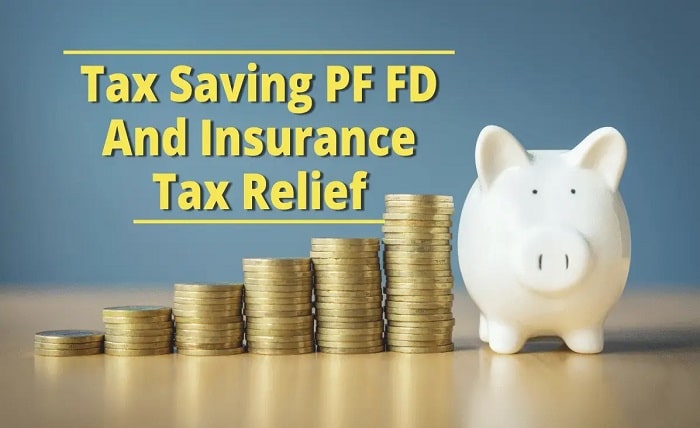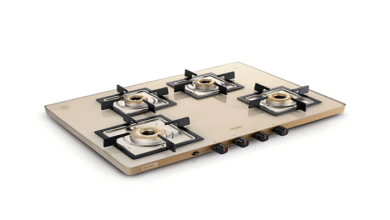Tax Saving PF, FD, and Insurance: Maximizing Your Tax Relief

When it comes to managing your finances, one aspect that requires careful attention is tax planning. It is essential to explore various avenues that can help you save taxes and optimize your overall financial strategy. In this article, we will delve into three popular tax-saving instruments: Public Provident Fund (PPF), Fixed Deposits (FD), and Insurance Policies. By understanding their features and benefits, you can make informed decisions to maximize your tax relief while securing your financial future.
Understanding Tax Saving
Tax saving refers to legally reducing your taxable income by utilizing deductions, exemptions, and incentives provided by the government. Tax saving refers to legally reducing your taxable income by utilizing deductions, exemptions, and incentives provided by the government such as small employer’s relief and the likes. It is a crucial part of financial planning as it helps you retain a larger portion of your hard-earned money and channel it toward other financial goals. By investing in tax-saving instruments, you not only save taxes but also build a corpus for your future needs. Proper documentation, like learning how to create a pay stub template, can help keep track of your earnings and deductions effectively.
Importance of Tax Planning
Tax planning plays a pivotal role in ensuring your financial well-being. By carefully planning your investments, you can minimize your tax liability and maximize your savings. It allows you to make the most of the tax benefits offered by the government, which can lead to significant savings over time. Moreover, tax planning helps you align your investments with your long-term financial goals, providing financial security and stability.

Overview of Tax Saving Instruments
- Public Provident Fund (PPF)
The Public Provident Fund (PPF) is a government-backed savings scheme designed to provide individuals with a safe and attractive investment avenue. It offers a combination of tax benefits, stable returns, and long-term wealth creation. The PPF account has a lock-in period of 15 years, and it can be extended in blocks of five years. It is known for its high safety, guaranteed returns, and tax-free status.
- Fixed Deposits (FD)
Fixed Deposits (FD) are popular investment instruments offered by banks and financial institutions. They provide a fixed rate of interest over a specific period. FDs are considered low-risk investments, making them ideal for conservative investors. By investing in tax-saving fixed deposits, individuals can avail tax benefits under Section 80C of the Income Tax Act, 1961.
- Insurance Policies
Insurance policies offer financial protection against various risks and uncertainties. Apart from providing coverage, insurance policies also serve as tax-saving instruments. Premium payments made towards life insurance policies, health insurance policies, and other eligible plans qualify for tax deductions under Section 80C. Additionally, the maturity amount and death benefits received from insurance policies are also tax-free.

Tax Benefits of Public Provident Fund
- Contribution and Withdrawal Rules
To open a PPF account, individuals can visit designated banks or post offices. The minimum annual contribution is Rs. 500, while the maximum limit is Rs. 1.5 lakh. The contributions made to the PPF account are eligible for tax deductions under Section 80C. Furthermore, the interest earned and the maturity amount are completely tax-free.
- Tax Deduction Under Section 80C
The contributions made towards the PPF account are eligible for a tax deduction of up to Rs. 1.5 lakh under Section 80C. This reduces the taxable income, resulting in significant tax savings. It is important to note that the tax benefits are available only for the contributions made in the current financial year.
- Tax-Free Interest and Maturity Amount
The interest earned on the PPF account is exempted from tax. It is compounded annually and added to the account balance. Additionally, the maturity amount received at the end of the 15-year tenure is also tax-free, making the PPF a highly attractive long-term investment option.

Tax Benefits of Fixed Deposits
- Tax Deduction Under Section 80C
Investments made in tax-saving fixed deposits are eligible for a tax deduction of up to Rs. 1.5 lakh under Section 80C. This allows individuals to reduce their taxable income and save taxes. It is important to note that the lock-in period for tax-saving fixed deposits is five years.
- Tax on Interest Income
The interest earned on fixed deposits is taxable as per the individual’s income tax slab. However, individuals can make use of the tax-saving fixed deposit to minimize their tax liability by utilizing the deduction available under Section 80C.
Tax Benefits of Insurance Policies
- Premium Payment and Tax Deduction
Premium payments made towards life insurance policies, health insurance policies, and other eligible plans are eligible for a tax deduction under Section 80C. The maximum deduction allowed is Rs. 1.5 lakh, which can significantly reduce the taxable income.
- Tax-Free Maturity and Death Benefits
The maturity amount received from life insurance policies and the death benefits paid to the nominee are tax-free under Section 10(10D) of the Income Tax Act. This ensures that the benefits received from insurance policies provide financial security without any tax implications.

Strategies for Tax Planning Using These Instruments
- Allocating Investments
To optimize your tax savings, it is important to allocate your investments across different tax-saving instruments. By diversifying your investments, you can take advantage of the specific benefits offered by each instrument and minimize risks associated with a single investment avenue.
- Maximizing Deductions
To make the most of the tax deductions available under Section 80C, aim to invest the maximum allowable amount of Rs. 1.5 lakh across PPF, fixed deposits, and insurance policies. By maximizing deductions, you can reduce your taxable income and save a significant amount of tax.
- Balancing Risk and Returns
While tax-saving instruments provide tax benefits, it is equally important to consider the risk and return profile of each instrument. Evaluate your risk appetite, investment horizon, and financial goals before making investment decisions. Balancing risk and returns ensures that your tax-saving investments align with your overall financial objectives.

Conclusion
Tax planning is an integral part of financial planning, and understanding tax-saving instruments is essential to maximize your tax relief. Public Provident Fund (PPF), Fixed Deposits (FD), and Insurance Policies offer attractive tax benefits while helping you build a secure financial future. By utilizing these instruments strategically and considering your individual financial goals, risk appetite, and investment horizon, you can make informed decisions that optimize your tax savings while providing financial security.
Read more about: sports guru pro




